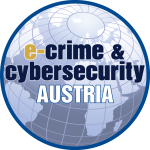Are CISOs – and their suppliers – fit for fighting the new cold war?
30th April, 2025 • Renaissance Wien Hotel, Vienna, Austria
If cybersecurity is national security, what changes must security vendors, tech suppliers and CISOs make?
Austria boosts cybersecurity spending in the face of sustained attacks
Underlining the growing conflation of cybersecurity with national security and national economic security, just how far perceptions of cybersecurity have swung towards national, political and economic security is emphasized by recent events in Austria.
In September, before the elections, a Russian hacker group used a crowd-sourced botnet project named DDOSIA to target the websites of several Austrian political parties as well as more than 40 other targets including national and regional government sites, airports, utilities, financial services and the Wiener Borse.
The Austrian interior ministry said it had registered an increase in cyberattacks since mid-September and the National Centre for Cyber Security stood ready to counter any threats. The Ukrainian ambassador to Austria, Vasyl Khymynets, shared the news of the cyber assaults on X, claiming they were proof of the hybrid war Russia was waging against “free Europe”.
The hacker group responsible said, amongst other things, “We decided to visit Austria again to check on cybersecurity ahead of the upcoming elections. As it turns out, nothing has changed since our last visit.”
Before this, in May, then Defence Minister Klaudia Tanner signed the Permanent Structured Cooperation (PESCO project) "Cyber Rapid Response Team" (CRRT) together with Lithuania and Latvia and the Austrian Armed Forces, which will be investing around 40 million euros in the cyber sector over the next four years.
The "Cyber Rapid Response Team" is a team of cyber specialists whose task is to detect, analyse and defend against cyber-attacks at any location. It secures traces of attacks, provides in-depth expertise and takes measures to respond appropriately to threats and attacks. The cyber response team thus represents an extended arm of the cyber forces and makes a significant contribution to cyber defence.
And earlier in the year, in March, the Counter Terrorism Preparedness Network (CTPN) and the United Nations Office of Counter Terrorism (UNOCT), in partnership with the AIT Austrian Institute of Technology, conducted a strategic, scenario-based, roundtable table-top exercise focused on a terrorist cyber-attack against critical infrastructure.
These initiatives illustrate how far cybersecurity has risen up government priorities. When the main threat appeared to be the P&Ls of private sector firms, governments were not that interested. States and law enforcement view citizens and public sector entities as their primary constituency – not corporations. But now that they have become prime targets, and now that it has become clear that the private sector is itself critical to national security (most CNI is in the private sector and private sector firms are key suppliers to the public sector) and to the economic security that underpins political stability, governments (and their regulators) are playing catch-up.
So, what does all this mean for cybersecurity professionals? It certainly means that the volume and sophistication of attacks will continue to increase. It means that malicious state actors will devote more resources to smarter attacks and new attack technology – like AI. But it also means that more regulation is coming, with perhaps more support from government and a better story on budgets for management. It also means more scrutiny for CISOs – for better and worse.


